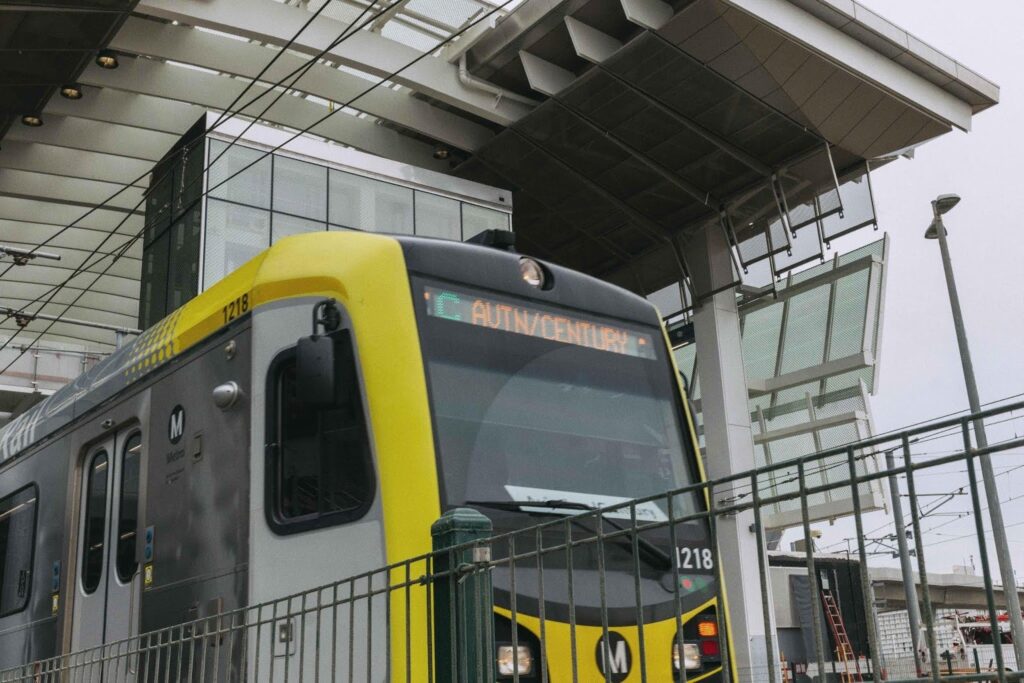
Debate panelists split over buses, broader impact of transit investments
 |
| Albuquerque1 Originally uploaded by Transportation for America |
| The new Rail Runner commuter rail service in New Mexico has been hugely popular, drawing new riders and luring former drivers to the service. |
Monday’s online debate on conservatives and public transportation was billed as a back-and-forth on why the ideological right should embrace public transportation. While differences persisted between our conservative and libertarian panelists about the impact of transit investments, another schism developed over how big a role buses should play.
Monday’s debate hosted by Transportation for America centered around the book Moving Minds: Conservatives and Public Transportation, written by conservatives William Lind and the late Paul Weyrich.
Lind used his opening remarks to summarize the book and refute the oft-repeated right-wing argument that public transportation requires government subsidies while automobiles and the roads required to support them are somehow a free-market outcome.
“In fact, the dominance of the automobile is a product of massive government intervention in the marketplace,” Lind said, citing decades of federal support for the interstate highway system as streetcars remained privately operated — resulting in crushingly unfair competition. “Conservatives above all people should know what happens when you subsidize one competitor and tax the other.”
“You’re either investing in (both highways and transit) or subsidizing both,” agreed panelist John Robert Smith, president and CEO of Reconnecting America and former mayor of Meridian, Mississippi. “You can’t have it both ways.”
Sam Staley, director of urban and land use policy at the libertarian Reason Foundation, was the designated mass transit critic of the debate, which he conceded was “probably accurate” but in need of further clarification. Staley is skeptical about the ability of transit to drive economic development or result in major lifestyle changes.
“I definitely think that transit has an important role to play,” Staley said, “but I think we need to be paying a lot more attention to the conditions under which transit works and when it doesn’t.”
Staley cited the Washington D.C. Metro’s Orange Line, saying transit has succeeded in dense, developed areas like Ballston in Northern Virginia but is less effective when those conditions are missing in places like New Carrollton, on the Maryland side of the District. (Didn’t the changes along the Orange line in Virginia come about largely due to that transit investment?)
Despite his misgivings about mass transit in general, Staley found himself in the unlikely position of defending buses from Lind’s attacks. Lind argued most Americans “don’t like riding buses” and that only trolleys or streetcars would persuade choice-riders to give up their cars, to which Staley responded: “If we discount buses, we’re really doing a disservice to transit generally.”
The final panelist, American Public Transportation Association (APTA) president Bill Millar, also defended buses, saying the industry is rapidly adopting new technologies like bus rapid transit and dedicated lanes, which will appeal to drivers.
Panelists answered a number of interesting questions from listeners on topics such as public-private partnerships, rural transit needs and winning over anti-tax conservatives. Overall, despite differences over the role of buses and transit’s ability to influence broader change, panelists agreed on the general importance of public transportation and the need to make practical decisions not rooted in partisanship.
Smith put it well: “As mayor, I never found a pothole or a railroad crossing that identified as a Democrat or a Republican.”
If you missed the webinar or want to listen again, you can do that with any of the links below, or on the webinars page:
- Audio/video of session with presenter slides (click to launch in a new window)
- Full audio file (.mp3)
- Full downloadable video file (.mp4)
- Read more about the Moving Minds book.
- Buy the book from Reconnecting America



